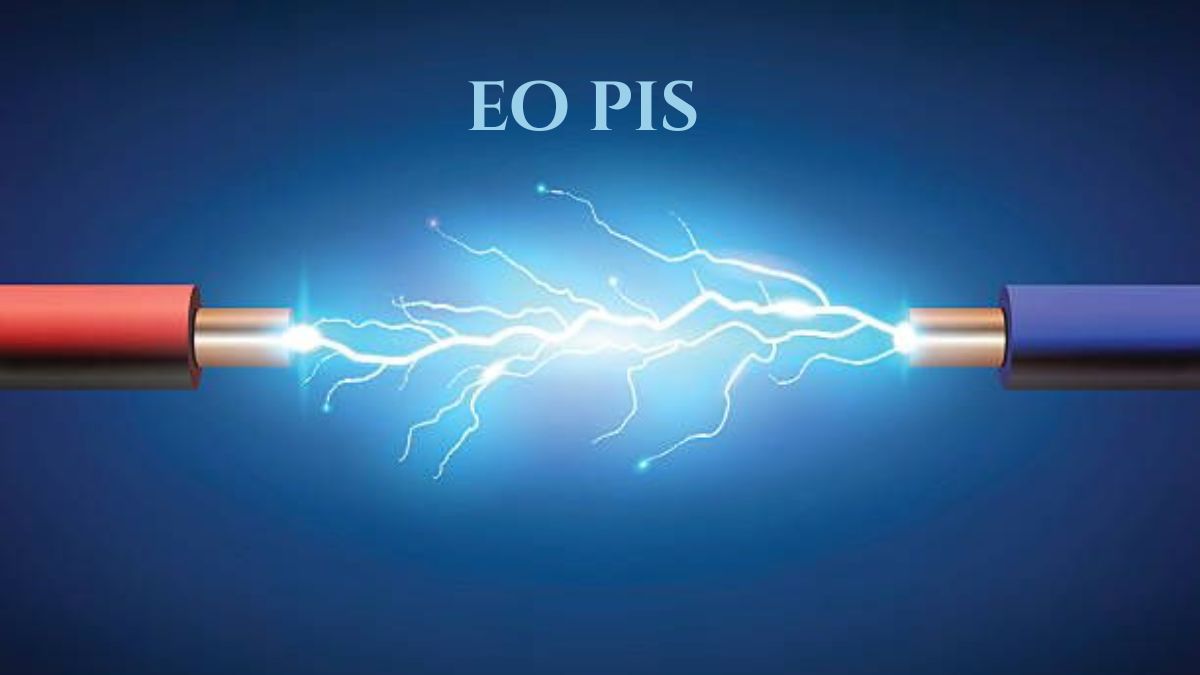In an era defined by rapid technological advancement, the integration of artificial intelligence (AI), computer vision, and real-time data analytics into surveillance systems has transformed how we approach public safety, national security, and emergency response. Among the most promising innovations in this field is EO PIS—Electro-Optical Perimeter Intrusion System. Though the acronym may sound technical, its implications are far-reaching and increasingly relevant to both government agencies and private enterprises.
This article provides a comprehensive overview of EO PIS, explaining what it is, how it functions, its core components, real-world applications, benefits, limitations, and future potential. Whether you are a security professional, a policymaker, or simply a curious reader, you’ll gain a clear understanding—not through jargon, but through straightforward explanations—of why EO PIS represents a major leap forward in intelligent perimeter protection.
What Is EO PIS?
EO PIS, or Electro-Optical Perimeter Intrusion System, is an advanced security solution that uses electro-optical sensors—primarily high-resolution cameras combined with infrared and thermal imaging—to detect, classify, and track intrusions along a protected perimeter. Unlike traditional motion sensors or basic CCTV systems, EO PIS incorporates AI-driven analytics to minimize false alarms and provide actionable intelligence in real time.
At its core, EO PIS merges hardware and software to create a “smart fence” that doesn’t rely on physical barriers alone. Instead, it uses visual data streams processed by machine learning algorithms to distinguish between threats (such as humans or vehicles) and non-threats (like animals, wind-blown debris, or shadows).
The term “electro-optical” refers to devices that detect and convert light (visible or infrared) into electronic signals. Thermal cameras, for instance, detect heat signatures, while standard optical cameras capture visual details. Together, these sensors provide a layered view of any area under surveillance—day or night, in clear or adverse weather.
How Does EO PIS Work?
Understanding the operational mechanics of EO PIS begins with its architecture, which typically includes three main components:
1. Sensors and Cameras
High-resolution optical cameras, thermal imagers, and sometimes LiDAR (Light Detection and Ranging) sensors are strategically placed along the perimeter or on poles and towers overlooking the protected zone. These sensors continuously capture visual and thermal data.
2. Edge Processing Units
Rather than sending all raw video data to a central server—an approach that would overwhelm bandwidth and storage—EO PIS often employs edge computing. This means initial analysis happens right at the camera or nearby processing units. Algorithms running on these edge devices can instantly analyze movement patterns, object size, speed, and trajectory.
3. Central Command and Analytics Software
Once a potential intrusion is flagged at the edge, the system sends alerts (including video clips and metadata) to a central command center. Here, AI-enhanced software further validates the threat, integrates inputs from multiple sensors for cross-verification, and may even suggest response protocols.
Crucially, EO PIS uses deep learning models trained on thousands of real-world scenarios. Over time, these models become more accurate at differentiating between, say, a raccoon and an intruder, or foliage moving in the wind versus a person crawling under a fence.
This layered, intelligent approach ensures that security personnel receive only high-fidelity alerts—reducing fatigue from false positives and enabling faster, more informed decisions.
Key Features of EO PIS
Modern EO PIS implementations come equipped with a suite of advanced features that set them apart from legacy surveillance systems:
- 24/7 All-Weather Operation: Thermal and infrared sensors allow continuous monitoring regardless of lighting or weather conditions—fog, rain, snow, or total darkness.
- Automated Threat Classification: The system can categorize intrusions by type (human, vehicle, animal) and even estimate intent based on behavior patterns (e.g., loitering vs. direct approach).
- Geo-Fencing and Virtual Boundaries: Security zones can be digitally defined without physical infrastructure. Crossing a virtual line triggers an alert.
- Integration with Other Systems: EO PIS often connects with access control systems, alarms, drones, or even robotic patrol units for a unified security response.
- Scalability: Whether protecting a small facility or a 50-kilometer border, EO PIS can scale through modular sensor deployment and cloud-based management.
- Low False Alarm Rate: Thanks to AI filtering, the system avoids common pitfalls of older technologies that mistook leaves or headlights for intruders.
These features collectively make EO PIS not just a detection tool, but a proactive intelligence platform.
Real-World Applications of EO PIS
The versatility of EO PIS has led to its adoption across numerous sectors where perimeter security is critical:
Critical Infrastructure Protection
Power plants, oil refineries, water treatment facilities, and communication hubs often operate in remote or high-risk areas. EO PIS provides continuous, reliable monitoring that reduces reliance on human patrols and minimizes blind spots.
For example, a nuclear facility in Eastern Europe recently replaced its aging fence-based intrusion detection with a EO PIS network. Within six months, false alarms dropped by 85%, and response times to verified threats improved by over 60%.
Military and Border Security
National borders, especially in rugged or sparsely populated terrain, are ideal use cases for EO PIS. The system can cover vast distances with fewer personnel, detecting illegal crossings, smuggling attempts, or reconnaissance activities.
In one pilot project along a desert border region, EO PIS units detected nighttime infiltration attempts that ground patrols had missed due to limited visibility. The thermal cameras identified heat signatures of individuals moving through dry riverbeds, triggering drone deployment for real-time tracking.
Airports and Transportation Hubs
Airports must secure expansive perimeters while maintaining smooth operations. EO PIS helps monitor tarmacs, cargo areas, and perimeter fences without disrupting flight schedules. It can also detect drones—a growing security concern near airports—by spotting their visual and thermal signatures.
Corporate and Industrial Campuses
Large corporate campuses, tech parks, and manufacturing sites benefit from EO PIS by deterring theft, vandalism, and unauthorized access. The system’s ability to integrate with employee badge systems allows it to flag anomalies—such as an individual entering a restricted zone without proper credentials.
Urban Public Safety
While traditionally used for perimeter defense, EO PIS concepts are now being adapted for urban environments. Smart city initiatives use similar AI-powered camera networks to monitor public spaces, detect crowd anomalies, or respond to emergencies like fires or vehicle collisions.
Advantages of EO PIS Over Traditional Systems
Compared to conventional intrusion detection methods—like buried cables, microwave sensors, or basic motion-activated cameras—EO PIS offers distinct advantages:
- Higher Accuracy: AI reduces false positives significantly.
- Non-Intrusive Installation: No need to dig trenches or install physical sensors along fences, which lowers installation costs and environmental impact.
- Visual Verification: Unlike abstract alerts from seismic or acoustic sensors, EO PIS provides visual proof of intrusion, enabling immediate situational assessment.
- Remote Management: Operators can monitor and adjust multiple sites from a single dashboard, ideal for organizations with distributed assets.
- Adaptability: Machine learning allows the system to evolve with new threats and environmental changes.
These benefits make EO PIS not only more effective but also more cost-efficient over its lifecycle.
Challenges and Limitations
Despite its strengths, EO PIS is not without challenges:
Initial Cost
High-quality electro-optical sensors and AI software require significant upfront investment. However, this is often offset by long-term savings in reduced false alarms, lower manpower needs, and faster threat resolution.
Data Privacy Concerns
Like any surveillance system, EO PIS raises privacy questions—especially when deployed in public or semi-public spaces. Responsible implementation requires clear policies on data retention, access controls, and compliance with local regulations like GDPR or CCPA.
Environmental Factors
While designed for all-weather operation, extreme conditions—such as heavy snowfall obscuring thermal signatures or dense fog limiting optical range—can temporarily reduce performance. Redundant sensor placement and multi-spectral fusion help mitigate this.
Cybersecurity Risks
As a connected system, EO PIS must be protected against hacking or data tampering. Encryption, secure firmware updates, and network segmentation are essential safeguards.
Addressing these challenges through thoughtful design and policy ensures that EO PIS remains a trusted tool rather than a liability.
The Role of Artificial Intelligence in EO PIS
AI is the backbone of modern EO PIS. Early-generation perimeter systems could detect motion, but not context. Today’s AI models go further:
- Object Recognition: Identifying not just “something moved,” but “a person in a black jacket is climbing the fence at Sector B.”
- Behavioral Analytics: Recognizing suspicious patterns—like someone repeatedly approaching a gate or a vehicle circling a facility.
- Predictive Capabilities: In advanced setups, AI can anticipate likely intrusion points based on historical data and environmental conditions.
Moreover, federated learning allows multiple EO PIS installations to improve collectively without sharing raw video data—enhancing accuracy while preserving privacy.
As AI continues to evolve, so too will EO PIS, potentially incorporating augmented reality overlays for operators or autonomous response coordination with robotic systems.
Future Trends and Innovations
The future of EO PIS is tightly linked to broader trends in AI, 5G connectivity, and smart infrastructure:
- Integration with Autonomous Drones: Future EO PIS networks may automatically dispatch inspection drones when an intrusion is detected, providing aerial verification without human intervention.
- Multi-Sensor Fusion: Combining electro-optical data with acoustic, seismic, or radar inputs will create even more robust detection layers.
- Cloud-Native Architectures: Moving more processing to secure cloud platforms will enable real-time collaboration between geographically dispersed sites and facilitate over-the-air updates.
- Ethical AI Frameworks: As public scrutiny of surveillance grows, developers are building EO PIS with built-in ethical guidelines—such as anonymizing non-threat data or limiting facial recognition use.
- Expansion Beyond Perimeters: The underlying technology of EO PIS is being adapted for interior security, maritime domain awareness, and even wildlife conservation (e.g., detecting poachers in national parks).
These innovations suggest that EO PIS will not only endure but expand its relevance across domains.
Conclusion: EO PIS as a Pillar of Modern Security
In a world where security threats are increasingly complex and dynamic, reactive systems are no longer sufficient. EO PIS represents a paradigm shift—from passive monitoring to intelligent, predictive, and integrated defense. By harnessing the power of electro-optical sensing and AI, it delivers precision, efficiency, and reliability that traditional methods simply cannot match.
From border control to corporate campuses, EO PIS is proving its value as a scalable, adaptable, and future-ready solution. While challenges around cost, privacy, and cybersecurity remain, they are not insurmountable—especially when weighed against the tangible benefits of enhanced safety and operational efficiency.
As technology continues to evolve, EO PIS will likely become a standard component of critical infrastructure and urban planning alike. Its eight mentions in this article are not mere repetition—they underscore its growing centrality in the security landscape. Understanding EO PIS today is not just about grasping a technical system; it’s about recognizing a foundational tool for building safer, smarter, and more resilient communities tomorrow.
Whether you’re safeguarding a national border or a neighborhood data center, EO PIS offers a vision of security that is not only vigilant—but intelligent.












